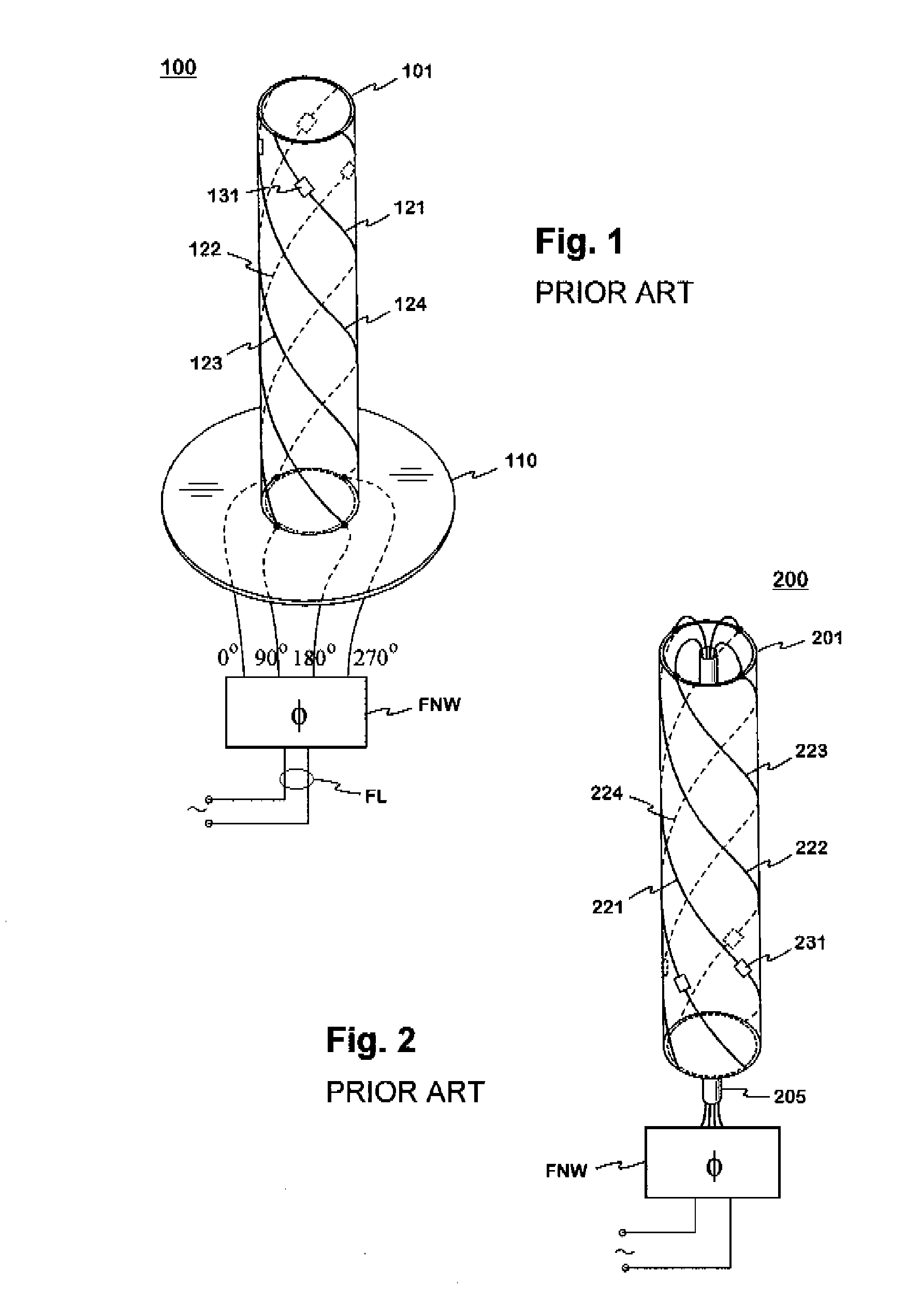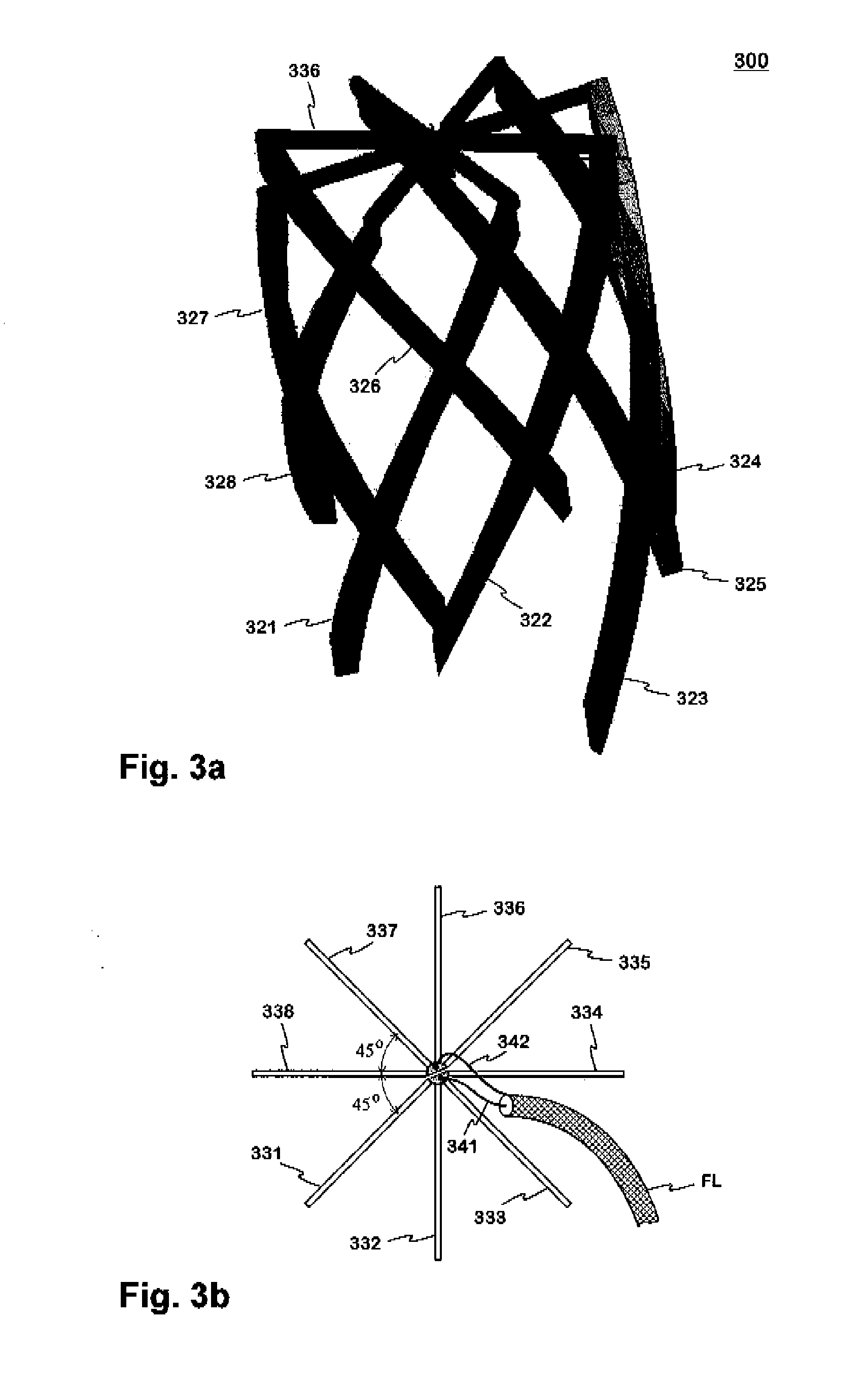Multiresonance helix antenna
a multi-resonance helix and antenna technology, applied in the direction of antenna details, non-resonant long antennas, antennas, etc., can solve the problems of increasing the number of components and production stages, requiring separate feed circuits, and small bandwidth
- Summary
- Abstract
- Description
- Claims
- Application Information
AI Technical Summary
Benefits of technology
Problems solved by technology
Method used
Image
Examples
Embodiment Construction
[0020]FIGS. 1 and 2 were already described in connection with the description of the prior art.
[0021]FIG. 3a shows an example of the helix antenna according to the invention. The antenna 300 comprises eight helical radiators 321-328 side by side on a same geometric cylindrical surface, the antenna then being octafilar by type. ‘Side by side’ means that the radiators start towards the same direction from a substantially same geometric plane perpendicular to the axis of the cylindrical surface, or the antenna axis. Each radiator is supported from its upper end to the antenna hub by a conductive arm, as the arm 336 of the sixth radiator 326. The antenna hub is on the antenna axis at the upper end of the antenna. Each arm functions as the feed conductor of one radiator at the same time, the antenna is then to be fed from above. An arm and a radiator form in this example a rigid object so that the antenna is wholly air-insulated and has no dielectric support parts.
[0022]The radiators are...
PUM
 Login to View More
Login to View More Abstract
Description
Claims
Application Information
 Login to View More
Login to View More - R&D
- Intellectual Property
- Life Sciences
- Materials
- Tech Scout
- Unparalleled Data Quality
- Higher Quality Content
- 60% Fewer Hallucinations
Browse by: Latest US Patents, China's latest patents, Technical Efficacy Thesaurus, Application Domain, Technology Topic, Popular Technical Reports.
© 2025 PatSnap. All rights reserved.Legal|Privacy policy|Modern Slavery Act Transparency Statement|Sitemap|About US| Contact US: help@patsnap.com



